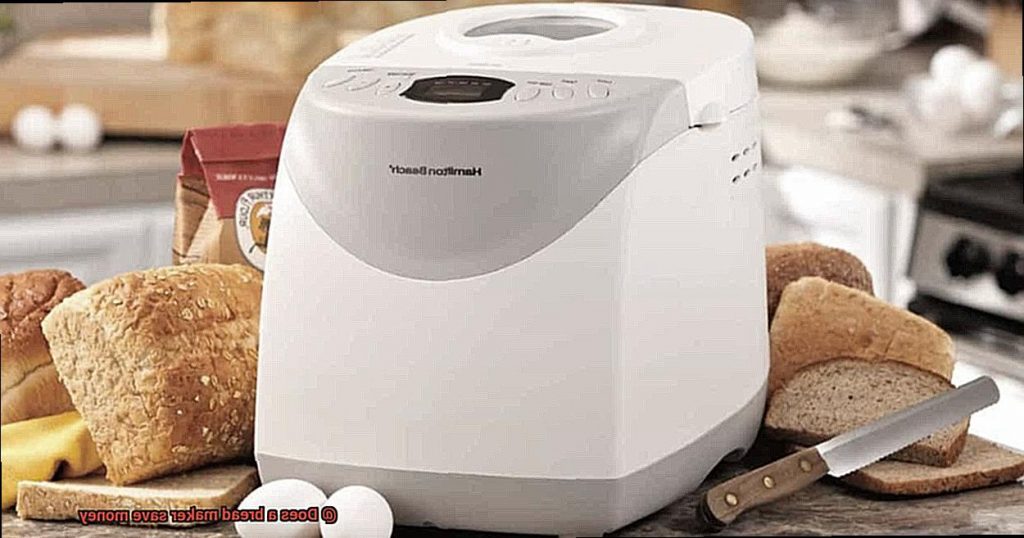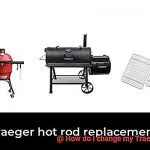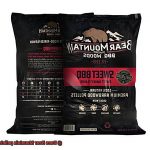Are you tired of forking over your hard-earned cash every week for store-bought bread that’s often loaded with artificial preservatives and additives? Are you curious about baking your own bread, but intimidated by the thought of kneading dough for hours on end? Well, fear not, my friend – the bread maker is here to save the day (and your wallet).
But let’s cut to the chase: does a bread maker actually save you money in the long run? Let’s crunch some numbers. A typical loaf of grocery store bread can set you back anywhere from $2 to $5, depending on the brand and type. If you’re buying a loaf every week, that can add up to a whopping $100 to $260 per year. In contrast, making homemade bread can cost as little as 50 cents per loaf – depending on the ingredients you use (and how much flour ends up all over your kitchen counter).
Now, I know what you’re thinking: “But wait, won’t buying a fancy-schmancy bread maker set me back even more?” Not necessarily. While bread makers can range in price from $50 to $300 (depending on their features and capabilities), they are a one-time investment that can last for years. Plus, once you start experimenting with different flours and flavors (hellooooo cinnamon raisin.), you’ll be whipping up delicious loaves that put those store-bought imposters to shame.
So not only can a bread maker save you money in the long run, but it also allows you to control exactly what goes into your bread – no more mystery ingredients or hidden sugars. And let’s not forget about the satisfaction and sense of accomplishment that comes with mastering this age-old craft. Trust me – there’s nothing quite like slicing into a freshly baked loaf of homemade bread and basking in its warm, yeasty aroma.
So if you’re ready to ditch the store-bought stuff and start baking your own bread, a bread maker might just be the perfect investment for you. Give it a try and see for yourself – your taste buds (and wallet) will thank you.
Contents
What is a Bread Maker?
A bread maker is an incredible kitchen appliance that simplifies the process of making bread. It comes equipped with a bread pan, paddle, and control panel, and offers a range of settings that allow you to make your preferred type of bread, including white, whole wheat, and gluten-free.
But does a bread maker save you money? Absolutely. Although the initial cost may seem high, it can actually save you money over time. The cost of ingredients for homemade bread is typically lower than store-bought bread. And you can make larger quantities at once, reducing the need to purchase bread frequently.
Moreover, a bread maker allows you to carefully regulate the quality of ingredients used in your bread. You can steer clear of unnecessary additives or preservatives that might be present in store-bought bread and customize your bread to meet your dietary needs or preferences.
While a bread maker automates much of the process, there is still some time involved in measuring out ingredients and waiting for the bread to bake. However, for many people, the convenience and cost savings of using a bread maker outweigh any extra time required.
In addition to being cost-effective, homemade bread is often fresher and healthier than store-bought bread. By getting yourself a bread maker, you’ll be able to experience all the advantages of freshly baked homemade bread while saving money in the long run.
Cost of Making Bread at Home vs. Store-Bought Bread
As an expert on the cost of making bread at home versus store-bought bread, let me give you the lowdown on all things bread-related.
Let’s start with the cost of store-bought bread. Depending on the brand and type, you can expect to pay anywhere from $2 to $5 per loaf. That’s a lot of dough (pun intended) to spend on something that may not even meet your standards.
Now, let’s crunch some numbers on the cost of making bread at home. Yes, there are initial investments involved in purchasing a bread maker and ingredients such as flour, yeast, salt, and sugar. However, over time the cost per loaf can be significantly lower than buying store-bought bread. For example, a 5-pound bag of flour can make up to about 10 loaves of bread, costing around $4, which comes out to about $0.40 per loaf. The cost of yeast and other ingredients is relatively low as well.
But it’s not just about saving money. Making bread at home allows for more control over the ingredients used. You can use whole wheat flour or reduce the amount of added sugar or salt to make a healthier and more personalized loaf of bread. Plus, using a bread maker can simplify the process while still allowing for that homemade touch.
Speaking of process, let’s talk about time and effort. While making bread at home does require some preparation and monitoring, using a bread maker can streamline the process and save time. And for those who enjoy baking and find it a relaxing activity, the time spent making homemade bread can be seen as a rewarding investment.
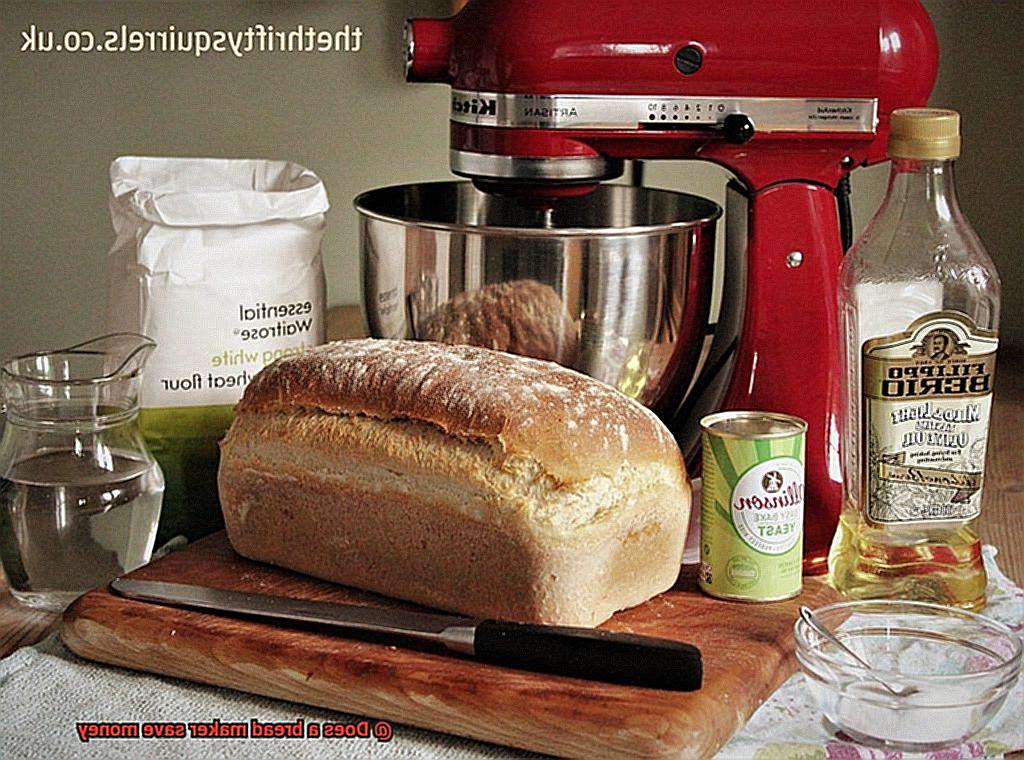
Benefits of Using a Bread Maker
Look no further than a bread maker. Not only can it save you money, but it also has numerous other benefits.
First and foremost, using a bread maker saves you money in the long run. Though the initial cost of purchasing one may seem steep, it pays off over time. No longer will you need to purchase expensive store-bought bread regularly. Instead, you can create your own loaves for a fraction of the cost.
But that’s not all – using a bread maker also allows you to experiment with different flour types and ingredients. Say goodbye to boring white bread and hello to whole wheat or gluten-free options. Customize your loaves to suit your dietary restrictions and preferences. Plus, homemade bread is free of preservatives and additives commonly found in commercial loaves, making it healthier for you and your family.
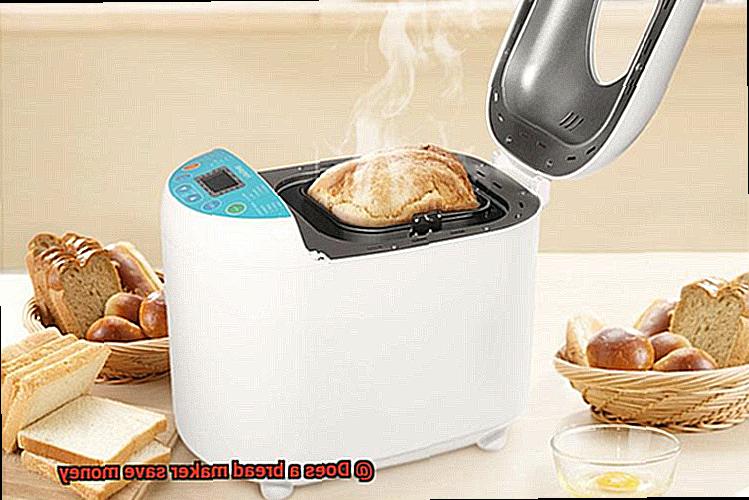
And let’s not forget about the convenience factor. With minimal attention required during the baking process, using a bread maker saves time and effort. You can engage in other activities while your bread bakes, making it perfect for busy individuals who don’t have time to bake from scratch.
Considerations for Purchasing a Bread Maker
Before you make your purchase, there are several factors to consider to ensure you make the right choice.
First and foremost, budget is a crucial consideration. Bread makers come in a wide range of prices, so it’s essential to determine how much you’re willing to spend. Keep in mind that higher-end models typically offer more features and durability.
In addition to the cost of the appliance itself, don’t forget about the cost of ingredients. While homemade bread can be cheaper than store-bought, specialty ingredients like organic or gluten-free flours can add up. Factor in the cost of ingredients when making your decision.
Frequency of use is another important factor. If you plan on using your bread maker regularly, investing in a higher-end model can be worth it. However, if you only plan on using it occasionally, a less expensive option may suffice.
Kitchen space is also a consideration. Bread makers can take up a lot of counter space, so make sure you have enough room before making your purchase. If storage space is limited, consider a model that is more compact and easier to store.
Lastly, think about the time and effort involved in making bread at home. While using a bread maker can make the process more convenient, it still requires preparation and baking time. Some people prefer the taste and texture of handmade bread over machine-made bread.
Time and Effort Required to Make Bread at Home
Few things are as satisfying as the aroma of freshly baked bread filling your home. But let’s face it, making bread from scratch can be a daunting task. It requires time, effort, and patience to master the art of bread-making. So, let’s explore the time and effort required to make bread at home, with and without a bread maker.
Using a bread maker can significantly reduce the amount of time and effort required to make bread. All you need to do is add the ingredients to the machine, select the desired settings, and let the machine do the rest of the work. It’s a quick and hassle-free process that saves time and energy. A great option for those who lead busy lives or have limited time to spend in the kitchen.
On the other hand, making bread without a bread maker involves several steps such as mixing, kneading, rising, and baking. These steps can take several hours to complete and require a significant amount of effort. Making bread this way also requires attention to detail, ensuring that the dough is kneaded properly and has risen adequately before baking.
Despite the added effort, making bread from scratch without a bread maker can be a rewarding experience. There’s something special about knowing that you made your loaf of bread by hand, from start to finish. Plus, you can experiment with different ingredients and techniques to find your perfect recipe.
It’s essential to note that using a bread maker still requires some level of attention and effort. You must add the right amount of ingredients and select the appropriate settings for your desired type of bread. Cleaning the machine after every use is also necessary to maintain its longevity.
When it comes down to time and effort saved, using a bread maker may be more beneficial for some people. However, if you enjoy the process of making bread from scratch and have the time and patience to do so, making bread without a bread maker can be a therapeutic experience. For those who opt for the traditional way of making bread, here are a few tips to make the process more manageable:
- Plan ahead and set aside enough time for each step.
- Invest in a good quality stand mixer with a dough hook attachment to make kneading easier.
- Use instant yeast instead of active dry yeast to save time.
- Proof the dough in a warm place to speed up the rising process.
Tips for Saving Money with a Bread Maker
A bread maker can be a game-changer for your wallet and taste buds. Here are five tips for maximizing your savings with a bread maker.
First up, buy ingredients in bulk. Flour, yeast, and sugar are just some examples of ingredients that often come cheaper when purchased in large quantities. This way, you can enjoy fresh bread without breaking the bank.
Next, get creative with your recipes. Experiment with different types of flour or try making sourdough bread using a homemade starter. By mixing things up, you can keep your taste buds satisfied while also saving money on pre-made loaves.
Another way to save money with a bread maker is by using the timer function. Bake bread overnight or while you’re at work to take advantage of lower energy rates during off-peak hours. Plus, this way, you can avoid using your oven during the hottest parts of the day and save on your energy bill.
Don’t let leftovers go to waste. Slice and freeze extra bread for later use. This way, you’ll always have a stash of fresh slices on hand and won’t have to worry about throwing out stale or moldy bread.
Lastly, don’t limit yourself to just making bread. Bread makers can also make pizza dough, bagels, and other baked goods. By getting more use out of your bread maker, you can save money on specialty appliances and tools.
AYqwrlQzfNY” >
Conclusion
To wrap up, a bread maker is more than just a convenient and time-saving appliance; it’s also a smart investment that can save you money in the long haul. With a bread maker at your disposal, you can effortlessly whip up homemade bread for a fraction of the cost of store-bought loaves. Plus, you get to control the quality of ingredients and tailor your recipes to suit your dietary needs.
Before taking the plunge and purchasing a bread maker, take into account factors such as budget, kitchen space, frequency of use, and time commitment. But with some planning and recipe experimentation, owning a bread maker can be an excellent addition to any kitchen.
Moreover, there are several ways to maximize your savings with this handy appliance. For instance, buying ingredients in bulk and using creative recipes can help reduce costs. Additionally, utilizing the timer function wisely and freezing leftovers for future consumption will stretch your dough even further.
And let’s not forget about all the other delicious baked goods beyond just bread-making that you can explore with your bread maker. From pizza dough to cinnamon rolls to gluten-free options, the possibilities are endless.
So why not give it a try? Not only will you save money in the long run, but you’ll also enjoy fresh and tasty baked goods customized just for you.

